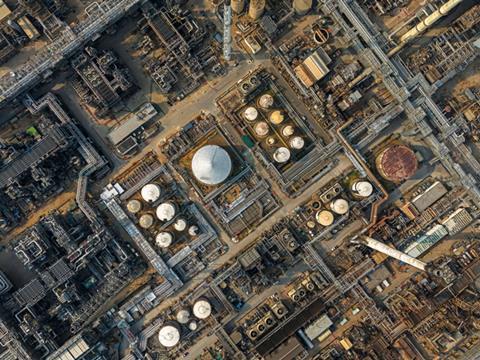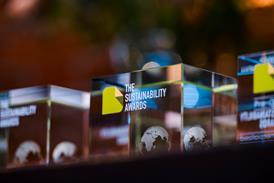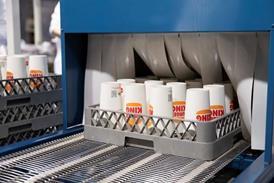
The second half of 2025 could see renewed investment in chemical recycling after the EU set out its approach to mass-balance accounting in early July. But what effect will these new rules actually have in practice, and is there still room for additional changes? ICIS’ Mark Victory tells us more.
The EU has proposed a fuel-exempt approach to pyrolysis oil, and a consultation period on these proposals ended on 19 August.
The Commission is currently conducting a review before presenting a final draft to its technical, with the aim of adopting the proposals under an implementing decision in Autumn 2025. The extent of any changes to the SUPD proposals resulting from the consultation is currently unclear.
The lack of clarity over the EU’s approach had delayed some investment decisions in 2024 and H1 2025.
Nevertheless, while this goes some way to clarifying one of the key regulatory uncertainties facing the market, there remain areas of legislative doubt that continue to negatively impact demand and investment decisions. These include:
- Definitions of waste and recycling under Directive 2008/98/EC - also known as the Waste Framework Directive – which forms the basis of the majority of EU recycling legislation definitions
- The End-of-life Vehicles Regulation (ELVR) and whether chemical recycling will be able to count towards proposed targets, and what those proposed targets will be
- Whether chemical recycling will be able to count towards Packaging and Packaging Waste Regulation (PPWR) targets
This was underscored on 5 August by OMV, whose CEO told ICIS that it needs a more secure regulatory environment before it is willing to risk further investment in scaling up its chemical recycling facilities.
With Europe the first region to detail its approach to mass-balance accounting, there are also concerns over the impact of a fuel-exempt approach on cost-competitiveness with other regions – should they adopt more lenient mass-balance accounting practices such as free-allocation – along with the negative impact on profitability domestically compared with a free-allocation approach.
Legislation surrounding renewable fuels, meanwhile, enjoys greater clarity, and targets under legislation such as the Renewable Energy Directive (RED) III and the Fit for 55 package are encouraging the use of pyrolysis oil as fuel (under the Fit for 55 package fuel derived from plastic waste can count towards targets such as those for sustainable aviation fuel (SAF) provided it meets certain criteria such as demonstrating emissions reduction).
This continues to encourage tyre-based pyrolysis oil producers to separate out bio-attributed content and polymer content in pyrolysis oil production, with bio-attributed content attracting premiums compared with polymer-derived tyre-based pyrolysis oil. This is a trend expected to continue in H2 2025 and further in to the mid term.
The wider investment climate remains challenging, particularly given the consolidation of cracker volumes in Europe. Nevertheless, despite both regulatory and macroeconomic uncertainty, investment into pyrolysis oil continues, and brand owners still see pyrolysis oil as a key solution for mass-scale food-contact recycled packaging.
Prices have proved resilient so far in 2025 to the wider macroeconomic malaise afflicting the European chemical sector – particularly for plastic-derived grades - which is at least in part due to structural shortages.
Pyrolysis is expected to be the world’s largest chemical recycling technology by capacity. Europe has a current plastic-derived pyrolysis oil installed input capacity of approximately 150,000 tonnes/year, according to the ICIS Recycling Supply Tracker - Chemical. There is an additional pyrolysis oil capacity of more than 300,000 tonnes/year under construction or undergoing commissioning.
A number of pyrolysis oil plant start-ups have faced delays in 2023-2025 as a result of:
- Access to suitable quality waste
- Challenges managing the variability of feedstock properties
- Delays in environmental permits
- Longer than expected commissioning phases for process optimization
- Negative macroeconomic conditions creating financing challenges and changing cost structures
This has created a challenge for upstream recycled agglomerate players. Many waste managers have added agglomeration capacity in recent years with a view to serving the burgeoning pyrolysis oil market.
Nevertheless, plant start-up delays has meant the while agglomeration capacity has come onstream, the pyrolysis oil capacity this feedstock was intended to serve has not. This has meant a reduction in investment in agglomeration, and some lines being idled.
There are concerns that this could create challenges for the pyrolysis oil industry as it grows, with access to sufficient high quality waste continuing to be seen as one of the core potential barriers to market scale.
Players continue to expect demand to scale up for pyrolysis oil – particularly plastic-derived grades – in the next 12-24 months, but expect a more rapid increase in supply and demand from 2027-2028 as players gear up to meet voluntary and regulatory recycling targets for 2030.
If you liked this story, you might also enjoy:
The ultimate guide to the Packaging and Packaging Waste Regulation in 2025
How are the top brands progressing on packaging sustainability?
Everything you need to know about global packaging sustainability regulation in 2025
The key to increasing the use of reusable packaging in supermarkets


















No comments yet